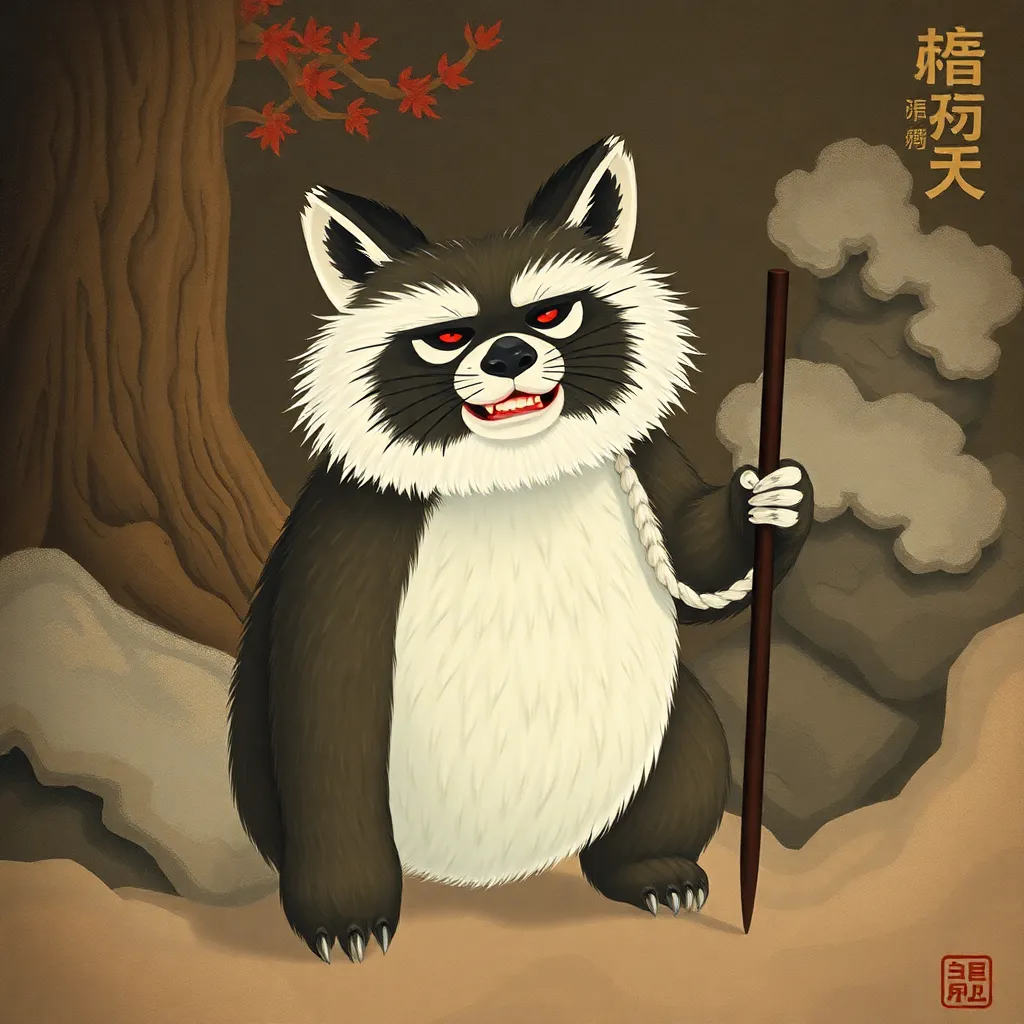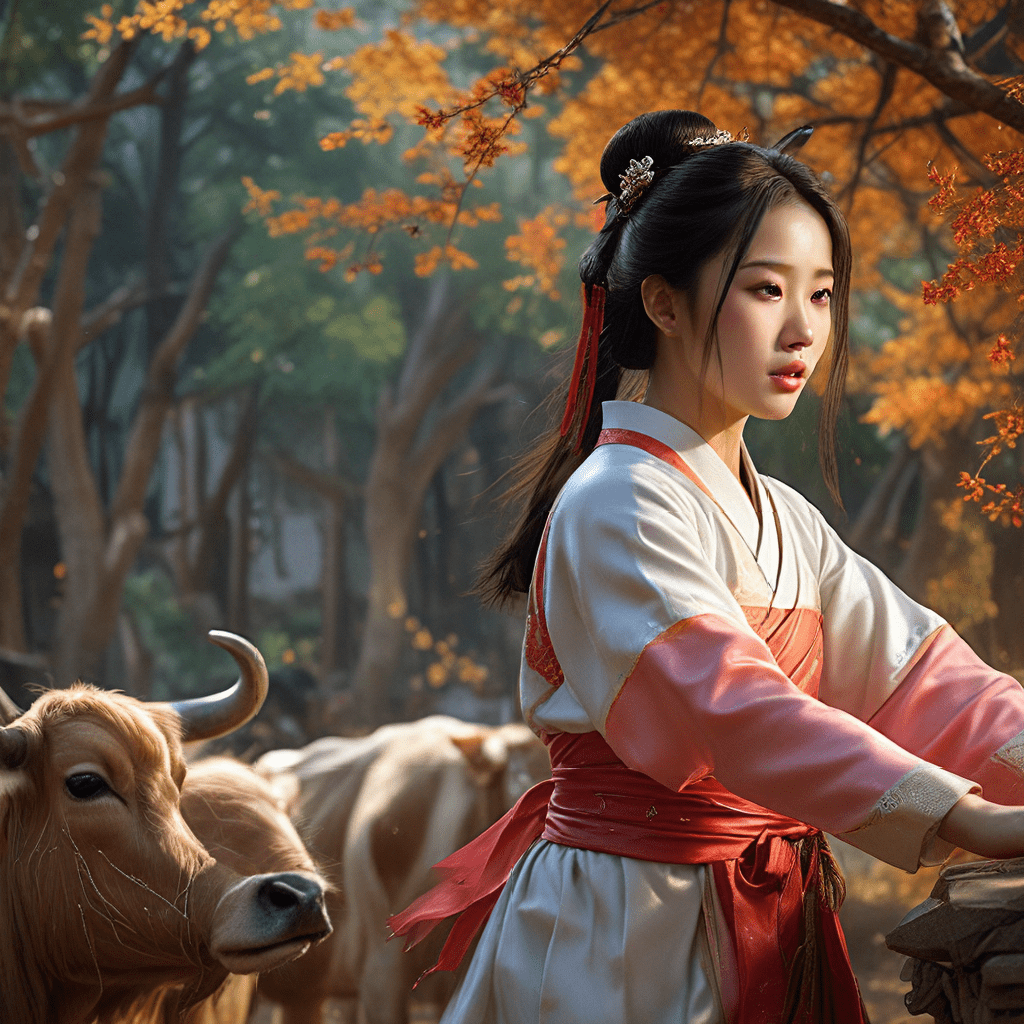The Tanuki in Art and Literature: Exploring Depictions of the Shapeshifter
I. Introduction
The Tanuki, often referred to as the Japanese raccoon dog, holds a special place in Japanese culture and folklore. Known for its playful and mischievous nature, the Tanuki is celebrated as a shapeshifter capable of transforming into various forms. This duality makes it a significant symbol in art and literature, embodying themes of transformation, adaptability, and trickery.
In Japanese folklore and mythology, the Tanuki is often depicted as a friendly figure, sometimes serving as a protector and other times as a trickster. Its ability to shape-shift reflects the fluidity of identity and the complexities of existence. This article aims to explore the various depictions of the Tanuki in art and literature, tracing its historical origins, its portrayal in traditional and contemporary art, as well as its representation in literature and film.
II. Historical Origins of the Tanuki
The historical origins of the Tanuki can be traced back to early Japanese texts and oral traditions. In ancient times, the Tanuki was often mentioned in folk tales and mythology, highlighting its magical abilities and association with the supernatural.
- Early References: The Tanuki appears in texts such as the “Nihon Shoki” and various folktales, where it is depicted as a benevolent creature that aids humans.
- Evolution of Characteristics: Over time, the Tanuki’s characteristics evolved from a mystical creature to a more playful trickster figure, often associated with prosperity.
- Comparison with Global Folklore: Similar to shapeshifters in other cultures, such as the Native American coyote or the European werewolf, the Tanuki embodies themes of transformation and duality.
III. Tanuki in Traditional Japanese Art
In traditional Japanese art, the Tanuki is frequently depicted in various forms, reflecting its cultural significance and the themes it embodies.
- Depictions in Ukiyo-e Woodblock Prints: Artists like Utagawa Kuniyoshi created ukiyo-e prints featuring Tanuki, showcasing its playful nature and mischievous antics.
- Symbolism in Traditional Paintings and Sculptures: Tanuki are often portrayed with characteristics such as a large belly and a sake bottle, symbolizing abundance and good fortune.
- The Role of Tanuki in Festivals and Rituals: In certain festivals, Tanuki statues are erected to bring good luck and prosperity, highlighting their importance in cultural rituals.
IV. Tanuki in Contemporary Art
Contemporary artists have reinterpreted the Tanuki in various mediums, reflecting modern societal themes and pop culture influences.
- Modern Interpretations by Contemporary Artists: Artists like Takashi Murakami incorporate the Tanuki into their works, blending traditional motifs with contemporary styles.
- Influence of Pop Culture on Tanuki Representations: Video games and animation have popularized the Tanuki, often portraying it as a whimsical character that appeals to younger audiences.
- Case Studies of Notable Artworks: Specific artworks, such as Murakami’s “Tanuki of the Future,” explore the juxtaposition of tradition and modernity.
V. The Tanuki in Literature
The Tanuki has been a recurring character in literature, appearing in both classic and modern works.
- Analysis of Classic Literary Works: Traditional tales often depict the Tanuki as a clever trickster, using its shapeshifting abilities to outsmart humans or other creatures.
- The Tanuki as a Character in Modern Novels and Stories: Contemporary authors have revived the Tanuki, exploring themes of identity, belonging, and the impact of urbanization.
- Themes and Motifs Associated with the Tanuki in Literature: Common themes include transformation, the balance between chaos and order, and the exploration of human nature.
VI. The Tanuki in Film and Animation
Film and animation have played a significant role in shaping the image of the Tanuki in modern culture.
- Representation of Tanuki in Studio Ghibli Films: In films like “Pom Poko,” the Tanuki is portrayed as a symbol of environmentalism, highlighting the conflict between nature and urban development.
- The Impact of Anime and Manga on the Tanuki’s Image: Various anime series incorporate Tanuki as characters, often emphasizing their playful and whimsical traits.
- Exploration of Tanuki in International Cinema: Films outside Japan also reference the Tanuki, showcasing its universal appeal as a symbol of transformation.
VII. Symbolism and Cultural Interpretations
The Tanuki carries rich symbolism that resonates within and beyond Japanese culture.
- The Tanuki as a Symbol of Transformation and Adaptability: Its shapeshifting nature symbolizes the ability to adapt to changing environments and circumstances.
- The Duality of the Tanuki as Both Trickster and Protector: The Tanuki’s role as a trickster often contrasts with its protective qualities, embodying the complexities of morality.
- Contemporary Relevance of Tanuki in Modern Society: As society evolves, the Tanuki continues to be a relevant figure, representing resilience in the face of change.
VIII. Conclusion
In conclusion, the Tanuki’s significance in art and literature is profound, reflecting diverse cultural interpretations and historical contexts. As a symbol of transformation and adaptability, the Tanuki continues to inspire contemporary artists and writers, ensuring its legacy endures.
Reflection on the enduring legacy of the Tanuki reveals its multifaceted nature, appealing to both traditional and modern sensibilities. As creative works continue to evolve, the Tanuki remains a potent symbol of the interconnectedness of culture, identity, and the human experience.
Ultimately, the future of Tanuki representations in creative works promises to explore new themes and ideas, keeping this enchanting shapeshifter alive in the hearts and minds of audiences around the world.



